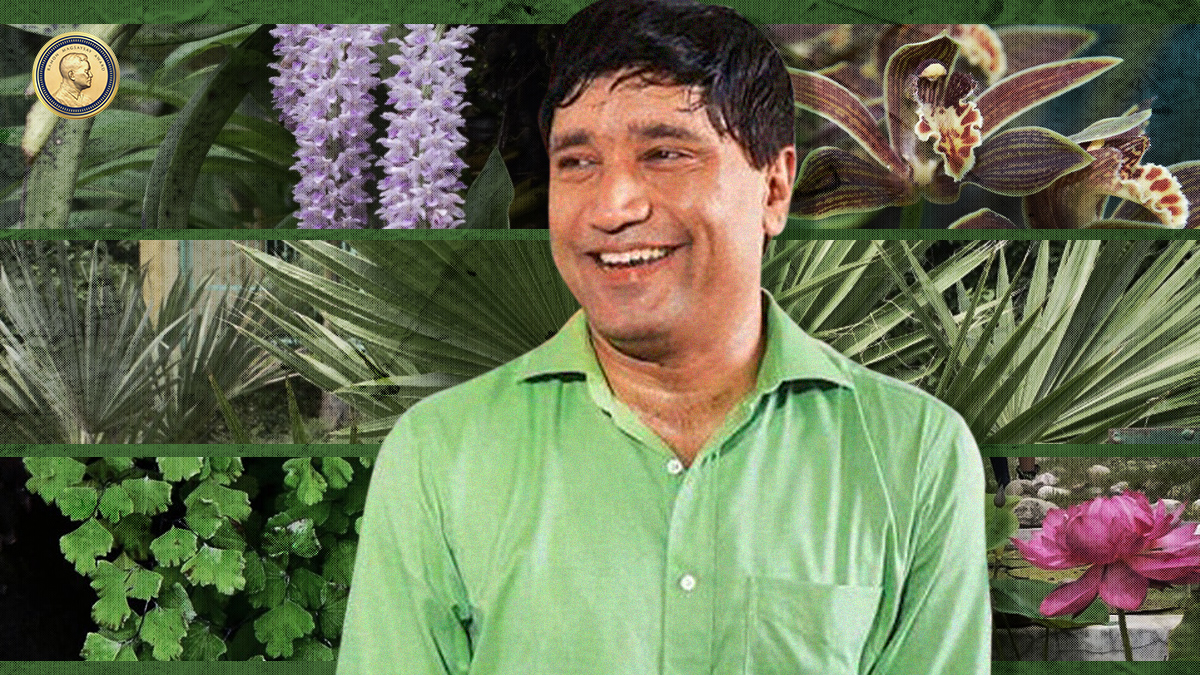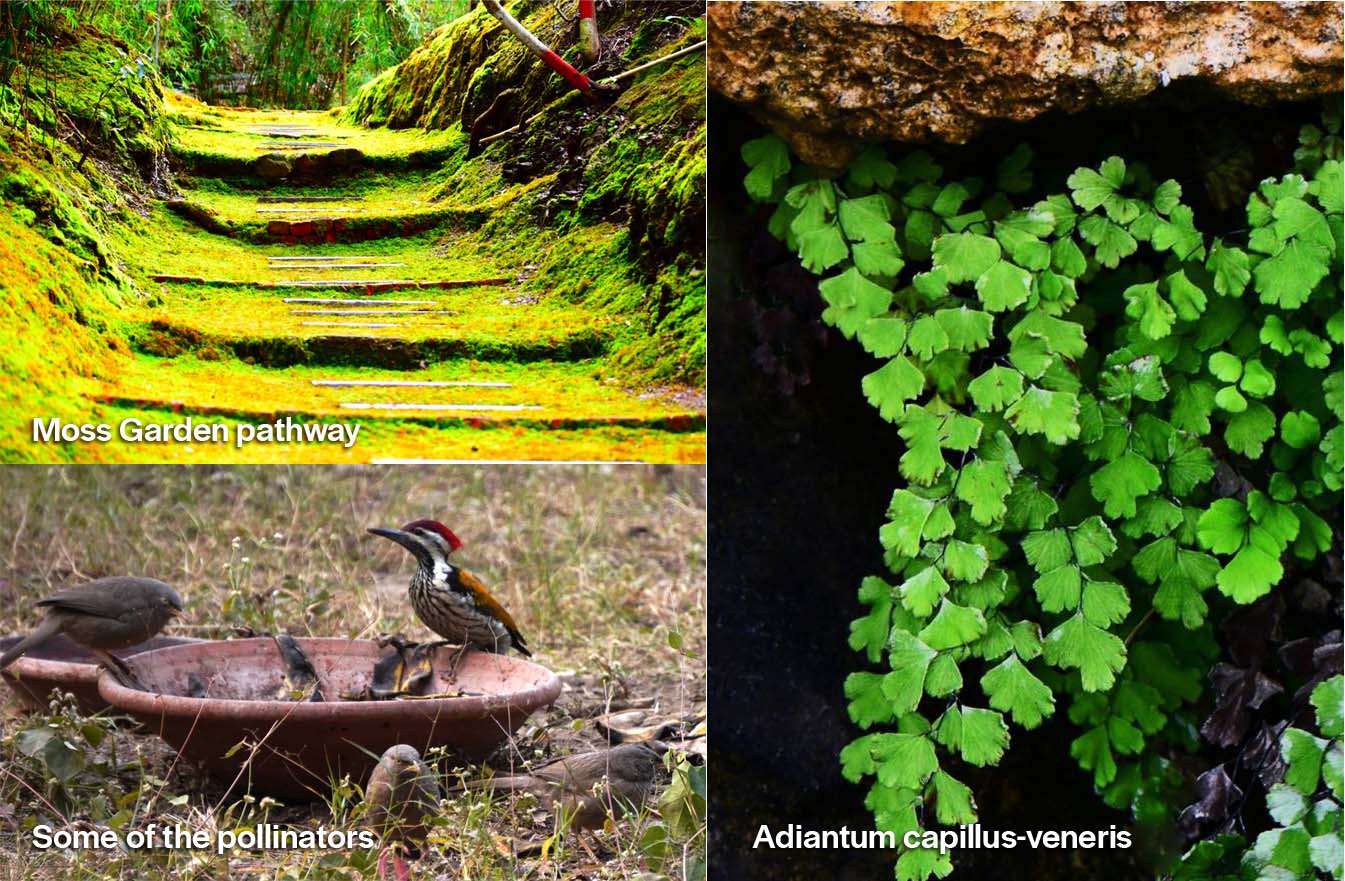Join us in our 65th Anniversary
GET INVOLVED

by SANJIV CHATURVEDI
2015 Ramon Magsaysay Awardee, India
Uttarakhand, an Indian Himalayan State, is abundantly rich in biodiversity because of its unique geographical location and topography, extending from tropical forests in the plain areas to alpine and glacial regions. A considerable area of Uttarakhand is under snow-capped mountains and glaciers making it one of the most important and suitable areas to be studied on how climate change impacts its flora and fauna species.
For the past five years, the research wing of the Uttarakhand Forest Department has undertaken some path-breaking projects aimed at the conservation of threatened and often neglected plant species, apart from development of unique concepts of Forest Healing Centre, ethnobotanical gardens, pollinator park and studying impact of climate change on phenology of important Himalayan plant species like Rhododendron Arboreum. As one of its officers, I have seen how this Wing has developed dedicated gardens and conservation centres for lower plant species, which are pioneer species, playing an important role in the ecological chain of nature.
Sometime in June 2020, we developed a Lichen Park, the first of its kind in the world, in Munsyari dedicated exclusively to lichens. There we have conserved and displayed around 100 different lichen species which highlight their important roles in ecology as well as in our day to day life. By the process of weathering rocks, they play an important role in soil formation. They are also a useful bio indicator for pollution. Lichens are the only source of food for wild animals like Musk Deer in the upper Himalayan reaches during winter. They are also used as spices in some of our most celebrated cuisines, apart from being used in natural dyes, and in making sun creams. Similarly, a Moss Garden has been established at Nainital, which is one of the very few moss gardens outside of Japan and the first of its kind in India. The Moss Garden presently displays around 75 different Bryophytes species, apart from very interesting information about these species, like use in treating wounds of soldiers, in World War I, and in making nests by Blue whistling thrush, apart from their role in soil and moisture conservation.

To highlight the importance of pollinators in sustaining our day-to-day life, we established a unique pollinator park at Haldwani in the same year in December. It is the first of such in the country which houses various pollen-bearing or nectar-bearing and host plants and around 100 different species of butterflies, insects, and honey bees have been reported in this pollinator park.
Our climate change studies of the past five years have shown trends of early flowering in species like the Rhododendron Arboreum, which is a clear evidence of the impact of climate change.
The research wing has also conducted research on the occurrence and abundance of the King Cobra, which is the national reptile of India and is primarily considered to be a rainforest species. We found that it was sighted up to an altitude of 2,400 meters in Mukteshwar, which is the highest altitude spotting of a King Cobra in the world. This was a very interesting finding since a King Cobra is a cold-blooded animal.
A year later in March, we established a Forest Healing Center at Ranikhet inspired by Japanese systems of forest bathing (shinrin yoku) and ancient Indian traditions. It is the first of its kind in India and involves activities of tree-hugging, forest walking, meditation, and sky gazing.
In June 2021 at Haldwani, we established a unique garden in which all state trees of 24 states and 7 union territories of India were conserved and grown in the same place. This was a very difficult and onerous task as it involved species from very diverse agro climatic zones such as desert regions, temperate zones, and rainforests. However, it has now become a center of attraction for both students as well as researchers, showcasing India’s rich floral biodiversity in one place.

In the same year in July, we were also able to establish the country's first cryptogamic garden at a place called Devvun (Forest of God) at 2,700 meters in altitude. Cryptogams are ancient plant species that mostly propagate through special structures called spores and not through seeds or flowers. These group include fungi, algae, bryophytes, pteridophytes, and lichens.
Also in July, we were also able to build the first orchid conservation center in Uttarakhand and in the entire northern India. Uttarakhand is very rich in orchid species with around 250 different orchid species have been reported, so far. The orchid conservation center in Mandal Valley currently houses around 70 different orchid species, many of which are highly threatened apart from an interpretation center and orchid trail. Certain new plant species were also reported from Uttarakhand during our exploration and findings were published in reputed national and international journals including the French journal Richardiana.
Apart from these initiatives, a conservatory of important medicinal plants and an arboretum of endemic trees and shrub species have been established in different altitudinal zones of Uttarakhand. The country’s highest altitude herbal garden was set up at Mana near the India-China border at an altitude of around 3,300 meters. It has around 50 different alpine species, most of which are endemic and highly threatened. Subsequently, we developed the largest Public Health Garden of State at Lalkuan which has more than 200 different types of medicinal plant species.
The main target group for awareness raising in our scheme of things are youngsters particularly students and young researchers. For that purpose, educational tours for students have been made free of cost at these conservation centers.
We were also able to develop India’s largest open air fernery in Ranikhet in September 2021. It currently houses around 150 different fern species, including some highly threatened species like tree ferns, and some medically important fern species like Hansraj which are very important in the Indian and Tibetan systems of medicine.
Latest studies show that grasslands are more effective than woodlands or forests in carbon sequestration. However, while the grass is ecologically important, it is an often neglected species. This is why we established India’s first dedicated grass conservatory at Ranikhet in November 2021. It presently houses 100 different grass species including various aromatic, medicinal, fodder, ornamental, and soil binder species.
With India being a rich repository of aromatic plants since time immemorial, the country's largest aromatic garden at Lalkuan was established in November 2021 and has around 150 aromatic species including various species of basil, jasmine, mint, ginger, and various other aromatic plants.
To take care of threatened plant species, the research wing specifically focused on in-situ as well as ex-situ conservation of designated threatened plant species of the Uttarakhand which included various trees, orchids, herbs, and insectivores species, some of which were of very important medicinal value.
Meanwhile, to showcase Indian Himalaya’s distinct spices, a unique Himalayan spice garden at Ranikhet was set up in August 2022 which showcases around 30 different Himalayan spices including saffron, Indian bay leaf, and various allium and chilly species of Himalaya.
In view of the strong connection of nature in Indian cultural tradition and mythology, the Reseach Wing has developed ethnobotanical gardens showing mention of various plant species in the country's most popular epics—Ramayana and Mahabharata. Similarly, such a garden has been established showing the importance and linkage of various tree species in the life of Lord Buddha from birth to death, and also similar mini gardens have been set up based on plant species mentioned in scriptures of major religions including the Quran and Bible—displaying verses related to conservation of flora and fauna, in these scriptures.
SANJIV CHATUVERDI is an idealistic Indian civil servant. In 2015, he was elected to receive the Ramon Magsaysay Award for “his exemplary integrity, courage, and tenacity in uncompromisingly exposing and painstakingly investigating corruption in public office, and his resolute crafting of program and system improvements to ensure that government honorably serves the people of India.” After his assignment in All India Institute of Medical Sciences (AIIMS), Chaturvedi is currently a Chief Conservator of Forests (CF) under the Research and Working Plan Wing of the Uttarakhand Forest Department.